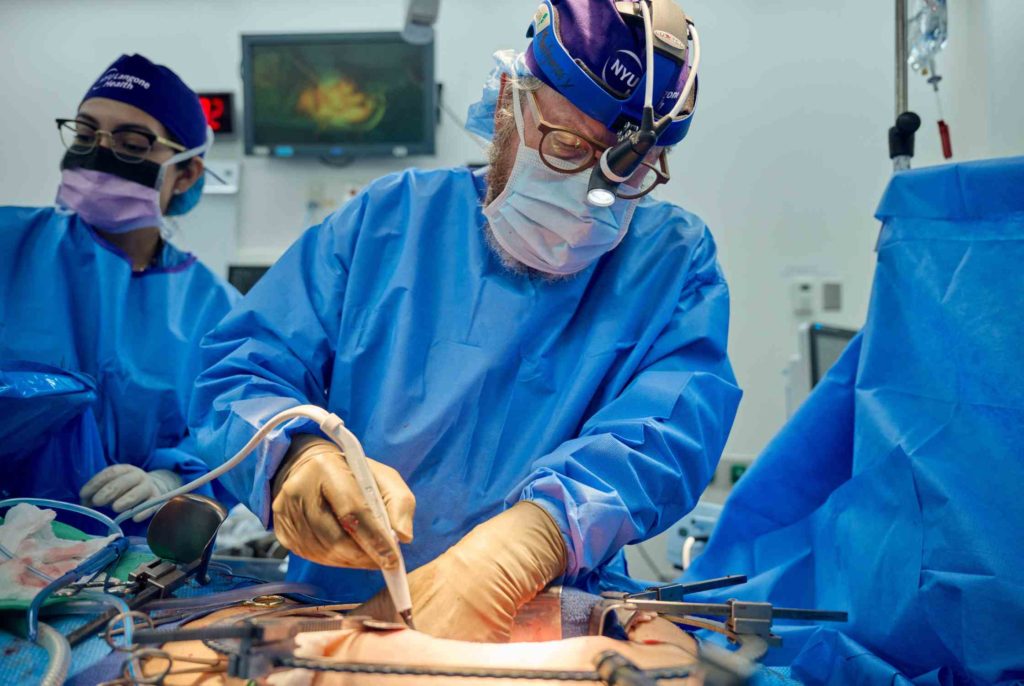
In a recent medical breakthrough, a genetically engineered pig kidney was successfully transplanted into a human recipient and has been functioning perfectly for 32 days and on. It has drawn the attention of the global medical community. Dr Montgomery, MD, DPhil the lead surgeon, in an official press release by NYU Langone Health said that this will create an unlimited, sustainable source of organs for transplantation.
This brings fresh hope to the millions of kidney failure patients waiting for the transplant as there’s a critical shortage of suitable donor organs. It also energises possibilities in the field of organ transplantation. As a physical therapist and healthcare enthusiast, let me share this extraordinary accomplishment in a simplified manner.
Xenotransplantation: Galsafe pig kidney can be transplanted into human body
This breakthrough transplantation procedure was performed at NYU Langone Transplant Institute led by Robert Montgomery, MD, DPhil, the H. Leon Pachter, MD, Professor of Surgery, chair of the Department of Surgery. It was performed on July 14, 2023, and was the fifth xenotransplant performed at NYU Langone. Xenotransplantation is the process of transplanting organs, tissues, or cells from one species to another.
There’s a huge mismatch between the number of donors and the growing waitlist of the recipient. According to the recent data from the Organ Procurement and Transplantation Network (OPTN) nearly 88,000 people are waiting for a kidney transplantation in the US alone.
The statement of Dr. Montgomery in the press release underlines the state of the situation, he says that “There are simply not enough organs available for everyone who needs one,” he further adds, “Too many people are dying because of the lack of available organs, and I strongly believe xenotransplantation is a viable way to change that.”

The kidney for xenotransplantation was sourced from a Galsafe pig, a notable breed that has gained approval from the FDA due to its suitability for xenotransplantation. The recipient of this life-changing procedure was Maurice Miller, a 57-year-old individual who had generously chosen to donate his body for medical advancement after being pronounced brain dead.
Maurice Miller still has a beating heart but was dependent on a ventilator for his breathing. Mary, the elder sister of Maurice was also present in the press release and on an emotional note she said “I can save with confidence that he would be proud of the fact that in the tragedy of his death. His legacy. we’ll be helping many people live.”
But how doctors overcome human body’s rejecting pig kidney
One of the most challenging aspects of this kind of interspecies transplantation is hyperacute rejection. The body and immune system of the recipient almost immediately reject the transplant. According to the doctors, the alpha-gal gene present in the pig body is responsible for this rejection.
One of the notable aspects of this procedure was the removal of the alpha-gal gene to counter the challenge of hyperacute rejection, “Alpha-gal is a carbohydrate that humans have high levels of antibody, against which causes hyperacute rejection. Knocking it out prevents that rejection.”
The pig that was used for this procedure is genetically engineered to remove this alpha-gal, which the doctors call these pigs as gal-safe pig. It’s interesting to note that previous attempts at genetically engineered pig organ transplants involved the incorporation of up to ten gene modifications.
Dr Montegomery further adds, “The pigs that were used to produce this kidney in this study are bred. They’re not cloned, which means that the gene edits are stable and consistent between pigs, and there’s no variation in the dose of the edits because they’re bred and not cloned. They can be scaled much more easily to provide an unlimited source of kidneys for patients who need them.”
Gal-safe pigs are FDA-approved as a source of meat for people who suffer from a rare disorder alpha-gale hypersensitivity.
The surgical process carried out on July 14, 2023, was meticulous and intricate. The recipient’s both kidneys were removed and transplanted with the genetically engineered pig kidney. Surprisingly, this time the transplanted kidney was functioning properly without rejection beyond day 32 of the surgery creating a ripple of hope and happiness among the medical fraternity.
“We’ve now gathered more evidence to show that, at least in kidneys, just eliminating the gene that triggers a hyperacute rejection may be enough along with clinically approved immunosuppressive drugs to successfully manage the transplant in a human for optimal performance—potentially in the long-term,” said Dr. Montgomery. According to the press release the observation is ongoing, and the study will continue through mid-September 2023.
This strengthen organ transplantation, gives hope to kidney disease sufferer
According to the team, there are two most prominent findings from the study. After a month of observation, the transplanted kidney shows no evidence of rejection and normal renal function and clearance of toxins, and second is the pig kidney appears to replace all of the important tasks that the human kidney manages.
“We think using a pig already deemed safe by the FDA, in combination with what we have found in our xenotransplantation research so far, gets us closer to the clinical trial phase,” said Dr Montgomery. “We know this has the potential to save thousands of lives, but we want to ensure the utmost safety and care as we move forward.”
According to the team the two pain challenges in these kind of procedure is, rejection and infection. As the decedent is under observation for on more month, all these uncertainties will be answered by the present and upcoming future studies. As we await the results of ongoing observations and studies, we can’t help but anticipate a future where every kidney disease patient will be cured.
Keep Reading: Overweight? Relax, it Doesn’t Equal Early Death Reveals Study





